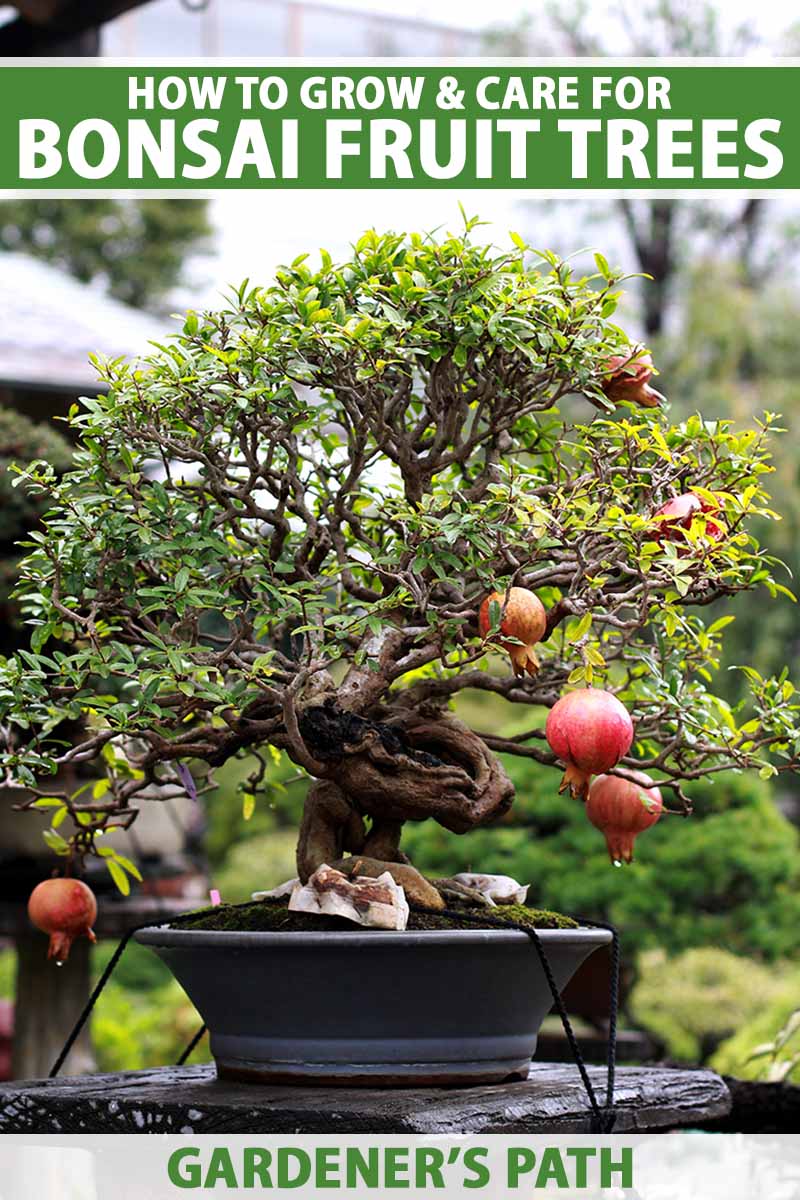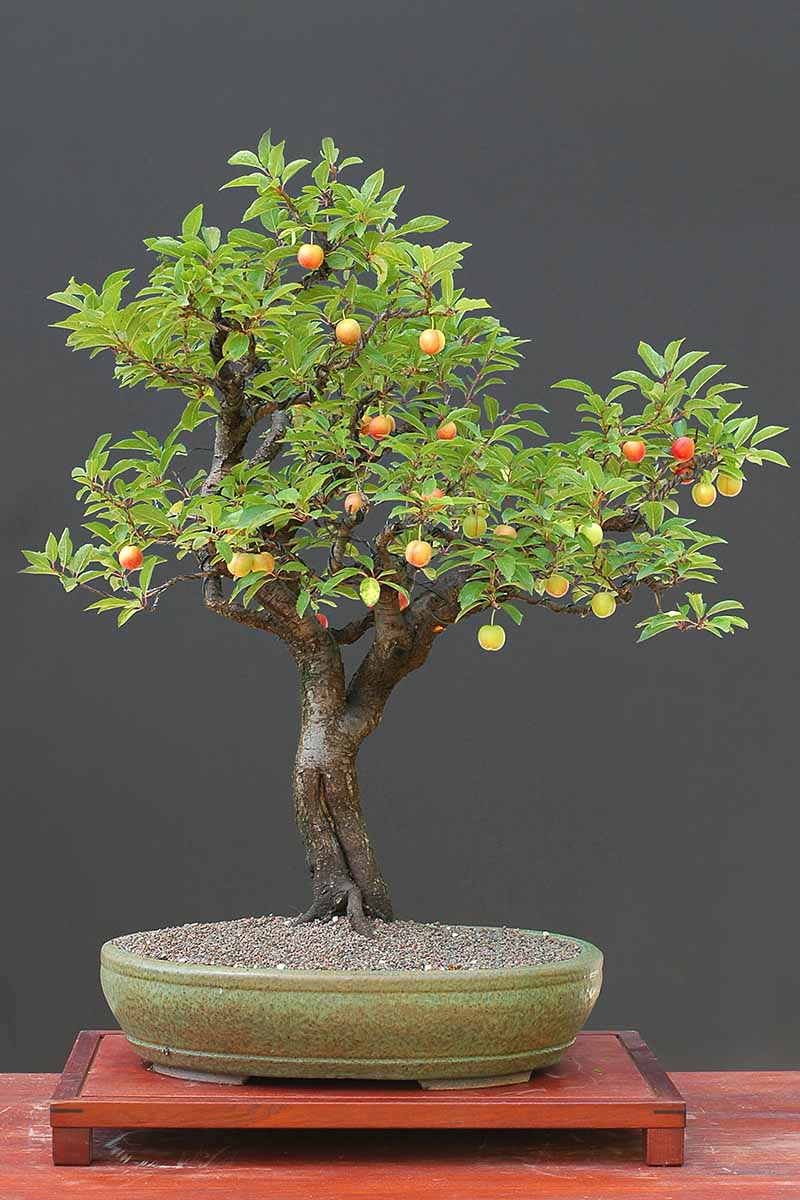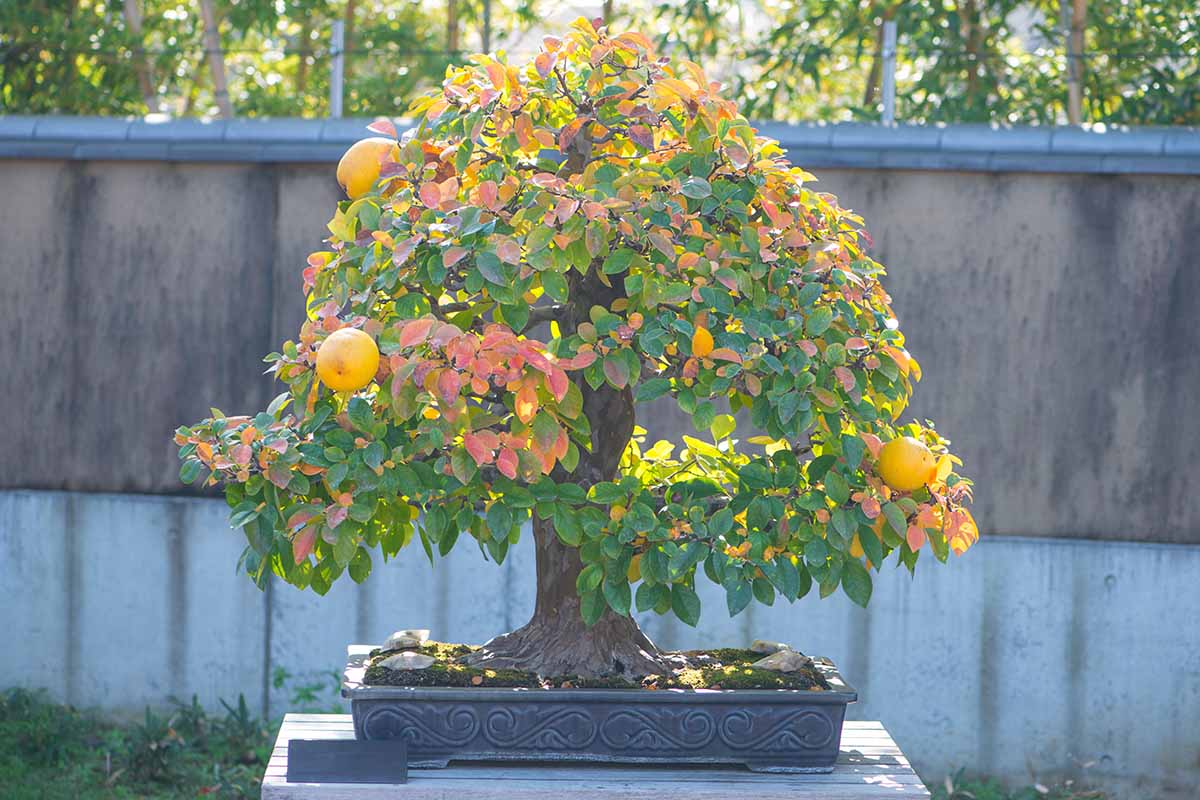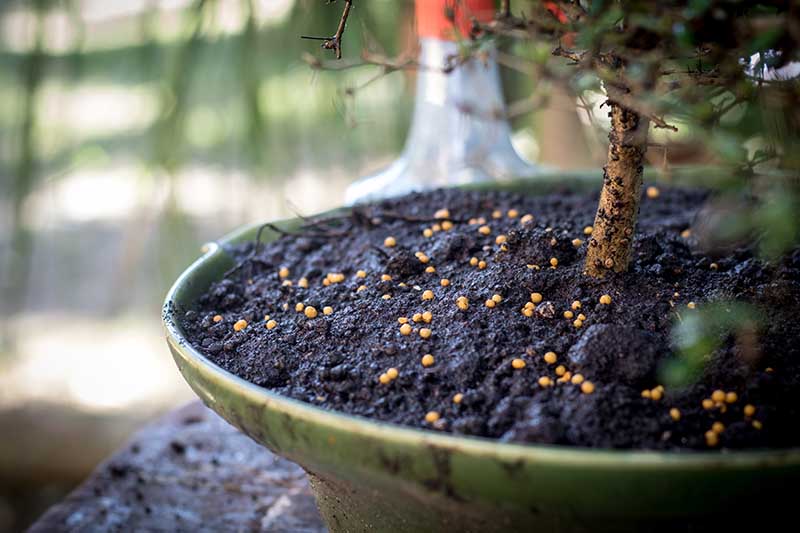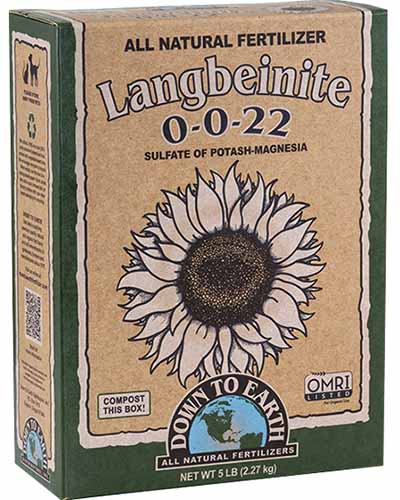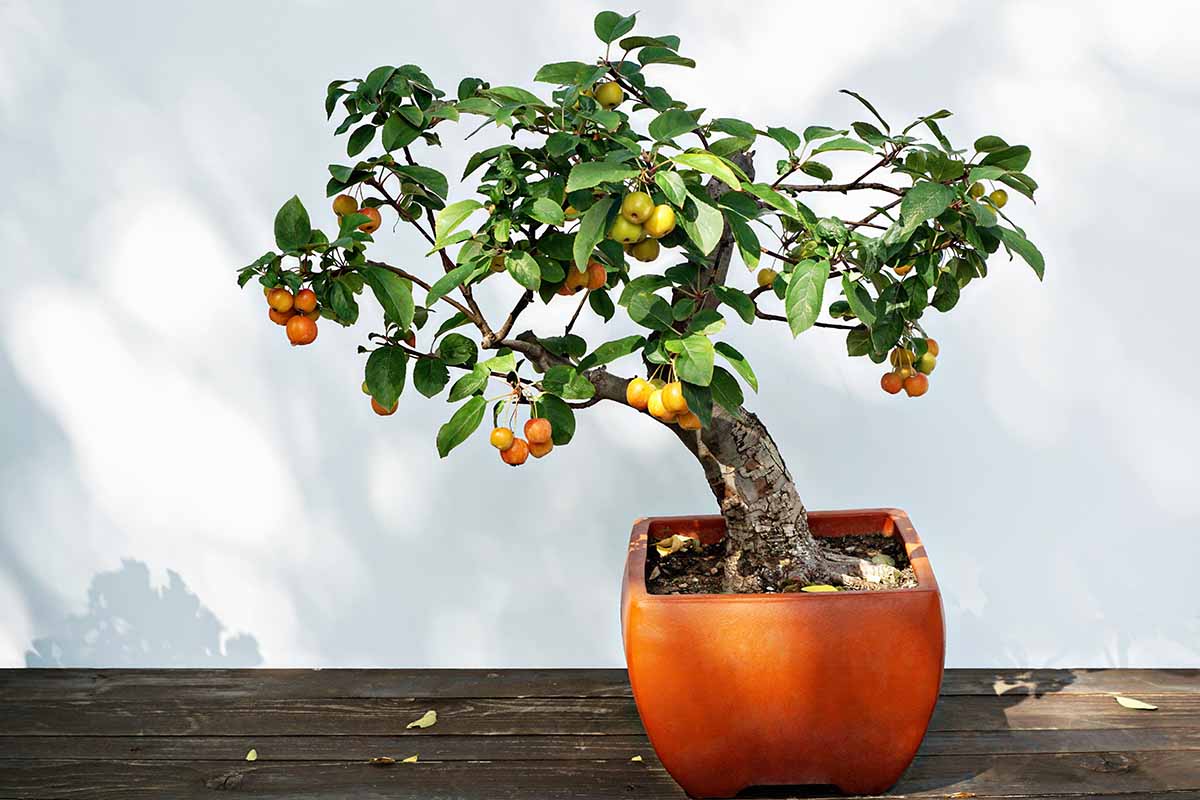Maybe one that is not only a beautiful demonstration of your skills, but a way to produce full-sized fruits that you can actually eat, is up your alley? Many people don’t realize that the art of growing bonsai trees isn’t about nurturing dwarf specimens. It’s the process of confining a full-sized species into a very restricted space. Nearly any type of tree can be grown as a bonsai, and that includes trees that grow totally normal-sized fruits. We link to vendors to help you find relevant products. If you buy from one of our links, we may earn a commission. If you’re up for the challenge – and the glory – here’s what it takes, and what we’ll go over in this guide: Ready to snack on your very first fruit from a bonsai tree? Then let’s start our journey.
A Quick Fruit Bonsai Overview
Technically, you can grow any tree species as a bonsai. That includes fruit trees. Obviously, you won’t produce the same yields to harvest that you would with a full-sized plant. A 40-foot persimmon has ample room to produce fruit, but a foot-tall tree might only produce two or three full-sized fruits. That’s okay, the point of bonsai isn’t to feed your family. Genetically, a bonsai fruit species is the same as that 40-foot fruit tree that’s growing in an orchard, which is why it grows full-sized fruits. In case you were wondering if you could encourage your bonsai to grow smaller fruits so you can produce more of them, or to look more proportional to the tree, the answer is no. There is no way to alter the size of fruits that a tree will produce using horticultural practices. The size is determined by genetics, and can only be altered through breeding. If you want a display that has small fruits, pick a species that already has petite ones, such as crabapple or blueberry.
Species to Select
There are several species that lend themselves to bonsai more than others. Crabapples, cherries, calamondin oranges (Citrus mitis), quince, key limes, and Meyer lemons are excellent trees to start with. Woody bushes such as blueberries are also a great place to start. You can also grow trees with fruits that are more decorative than edible, such as cotoneaster, little leaf linden, or weeping pear. If you’re up for more of a challenge, pomegranates, oranges, apples, and persimmons are beautiful and the large fruits produce a fascinating juxtaposition with the tiny trees. As I mentioned before, any tree can be grown as a bonsai, so don’t feel constrained. These are the most common options, but if you dream of raising a durian, don’t let anything stop you from trying.
Care
Caring for a fruit tree bonsai isn’t much different than caring for a standard one, but there are a few things you should keep in mind. If you’re unfamiliar with caring for these plants, you might want to check out our beginner’s guide first. Then come back here. Fruit species should be potted, repotted, shaped, and watered as you would any other bonsai. Here is how fruit trees differ from other bonsai: Just as many full-sized trees need a period of dormancy to produce fruit, so do these plants. Some trees require a certain number of chill hours, which is the amount of time spent below a certain temperature, in order to produce. Be aware of this when deciding which species to grow. For instance, apple trees need an average of 1,000 chill hours each year. To make things easy, choose a species that thrives in your growing zone. Beyond that, make sure you know how much sun exposure your chosen species requires to produce a harvest. While your tree might grow just fine in lower light otherwise, it might not produce those pretty treats without the sun it needs. Almost all fruit trees need to be grown outdoors full time. If you couldn’t hypothetically grow a full-sized species indoors, you can’t grow the bonsai version indoors either. Apple trees can’t grow indoors, whether they are full-sized or teeny-tiny. However, there are a few varieties, such as lemons and oranges, that can grow in a warm, sunny spot indoors.
Feeding
All bonsai must be fed with fertilizer. These plants only have a small amount of substrate to pull nutrients from, so you have to add the nutrients they need. You might be wondering if you should add extra potassium to encourage fruit formation. The answer is that it’s not necessary. A slow-release fertilizer is easiest to use because you can just sprinkle on a little and it will continue to feed the plant for months. Slow Release Bonsai Fertilizer Pellets Bonsai Boy carries four-ounce bags, and one of these is plenty to feed several small plants or one large plant for a year. Fertilize as you would normally for the species you’ve chosen, typically in early spring, late spring, and again in late summer. Refrain from adding any fertilizer in the weeks before the fruits mature. This can cause fruit drop. Trees need each of the major essential plant nutrients – nitrogen (N), phosphorus (P), and potassium (K) – to grow. While potassium is essential for helping the plant form sugar, starch, and carbohydrates, it acts on the entire plant, not just the developing fruits. Nitrogen, which many think of as the key to growing more foliage, is also necessary for the roots, trunk, and fruits to be healthy. It helps the plant form protein, vitamins, and enzymes that the entire plant needs. In other words, a plant needs all of these macronutrients to grow. It will take up what it needs and the rest will leach out with the excess when you water. That doesn’t mean you can apply way too much fertilizer and just let the extra wash out though – this can be toxic, causing sodium levels in the soil to increase to dangerous levels. One exception is if you’re finding the fruits are small and underdeveloped, or they don’t start forming at all. If this happens, it can help to test your substrate to see if it’s lacking in potassium. You can use a home kit or send a sample to your local agricultural extension office.
Pruning
Pruning is something that anyone who is growing a bonsai needs to master, but it’s particularly important for those who are growing fruit trees. Down to Earth makes a product called Langbeinite, which is perfect to increase potassium without increasing sodium. Just sprinkle a little on the soil as the buds are forming. Down to Earth Langbeinite You can purchase five-pound boxes at Arbico Organics if you find that your plant needs a little potassium boost. Not only do you need to adhere to the general principles of pruning, but you must prune to encourage ideal fruit formation. That means you need to keep both the needs of your species and the shape of your tree in mind. For instance, if you’re growing a blueberry, be aware that the best berries form on canes that are one to four years old. After that, they stop producing well. Experienced artisans create a large, central trunk with many canes extending from the top to create a canopy, then they snip away a few older canes each year so the plant keeps producing while maintaining an attractive shape. For an apple tree, you need to prune in the winter to create a pleasing shape that will also support the fruits that form. Broadly, that means you want a large, solid trunk and just a few short, sturdy branches extending from the trunk. These branches should be on opposite sides, or at least have a good amount of distance between them, so the apples that grow aren’t crowded. Familiarize yourself with the specific needs of your chosen species and keep them in mind when you’re pruning. You might also want to read our comprehensive guide to pruning bonsai for more tips. We’d love to hear about which species you end up growing. Let us know in the comments! And feel free to share any questions you may have as well. If you’d like to expand your bonsai garden further, and you felt that this guide helped on your way, we have a few other guides you might find interesting:
An Intro to Bonsai Trees: Information for the BeginnerHow to Grow and Train Dracaena Plants as BonsaiHow to Mix Your Own Bonsai Soil to Grow Healthy Plants
